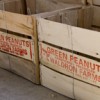
Every year farmers must harvest their crops. This process marks the end of the growing season and carries social significance in communities, but it also creates challenges for producers trying to deliver fresh, high-quality produce to market. Good postharvest practices establish appropriate cold chains that maintain the correct temperatures, humidity, and respiration rates while also ensuring the safety, sanitation,and quality of the fruits. These postharvest practices differ, depending on the size and economic situation of an operation. This eighteen-page fact sheet provides postharvest storage, packaging, and handling recommendations for small farm specialty crop producers. Written by Jonathan Adam Watson, Danielle Treadwell, Steven A. Sargent, Jeffrey K. Brecht, and William Pelletier, and published by the Horticultural Sciences Department.
http://edis.ifas.ufl.edu/hs1270
Tag: Postharvest and Handling
The Food Safety Modernization Act and the FDA Facility Registration Program
 The Food Safety Modernization Act that President Obama signed into law January 4, 2011 represents the most sweeping update to food safety regulation since the Federal Food, Drug, and Cosmetic Act of 1938. As part of FSMA, registration is required of facilities that manufacture, process, pack or hold food for human or animal consumption. This 3-page fact sheet was written by Susanna Richardson, Renée Goodrich Schneider, Mark A. Ritenour, Michelle D. Danyluk, and Keith R. Schneider, and published by the UF Department of Food Science and Human Nutrition, July 2013.
The Food Safety Modernization Act that President Obama signed into law January 4, 2011 represents the most sweeping update to food safety regulation since the Federal Food, Drug, and Cosmetic Act of 1938. As part of FSMA, registration is required of facilities that manufacture, process, pack or hold food for human or animal consumption. This 3-page fact sheet was written by Susanna Richardson, Renée Goodrich Schneider, Mark A. Ritenour, Michelle D. Danyluk, and Keith R. Schneider, and published by the UF Department of Food Science and Human Nutrition, July 2013.
http://edis.ifas.ufl.edu/fs231